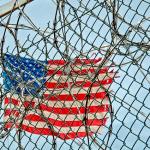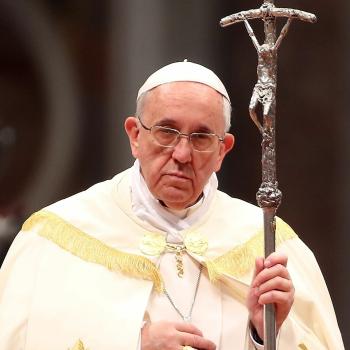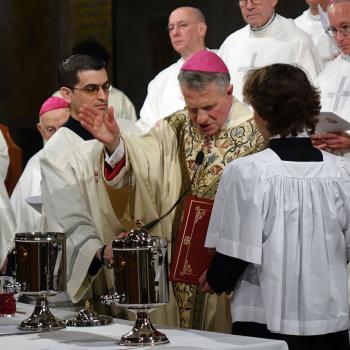
I regret to tell you that we have to do this one more time.
Today, for the third day in a row, again in Terre Haute prison, the United States government is going to carry out a federal execution. The victim of this execution will be Dustin Higgs, for his role in the kidnapping and murder of three women in 1996. He will be the last federal execution ordered by President Trump’s outgoing administration– and, perhaps, the last federal execution for a long time. Joe Biden will likely bring back the moratorium on federal executions after he takes office on Wednesday.
Higgs has lung damage from COVID-19, which has the potential to make phenobarbital suffocation excruciatingly painful for him, but the execution has been ordered to happen anyway. Barring the intervention of the Supreme Court, who stayed up until one in the morning to deny Lisa Montgomery a stay of execution and similarly denied one for Corey Johnson who also had COVID lung damage, he will be dead by tomorrow morning. And it’s going to hurt.
Higgs is not, as far as I know, as disabled as Lisa Montgomery and Corey Johnson were. We do know that he grew up poor in a violent home, as Johnson and Montgomery did. A psychologist who evaluated him says that Higgs is still suffering trauma from that childhood poverty and violence, and his school records show he had “significant intellectual and social impairment.” Trauma is a neurological injury, a real physical injury to the way the brain and nervous system work. It changes how a person responds in dangerous situations. There is plenty of evidence that growing up poor in itself puts people at risk for trauma. Many people who commit violent crimes come from families who treated them violently as children; child abuse and neglect raise the risk of a person committing a violent crime as an adult by 38 per cent, according to one study. A violent childhood encourages people to react violently when in danger, and makes any violent company they meet as adults seem like normal company to them. They don’t have the same response to the opportunity to commit a violent crime that a person with a safe, peaceful childhood would have. This doesn’t mean they don’t have a choice. Higgs wasn’t psychotic like Montgomery. But it is a mitigating factor in culpability.
In the United States, child abuse is rampant; we have the highest rate of child-abuse related deaths in the Western World according to a recent study. We’re also leading the world in factors that contribute to a violent and traumatic childhood, such as growing up poor: the same study demonstrated that we have the highest income inequality in the West. Thirteen million children in the United States face food insecurity. 1.4 million elementary school-aged children are homeless. That’s traumatic. That changes the brain for life.
And again and again, America has refused to do anything to mitigate those factors. Our social safety net is extraordinarily flimsy, putting a huge burden on families, and our mental health care is unavailable for most. Any attempt to fix this is met by massive resistance because it would be expensive. We stand back and watch as millions of children grow up with their brains primed to violence. And as a result, we are a violent people: the United States’ homicide rates are seven times higher than the rates in other high-income countries; gun violence in particular is twenty-five times higher. We reap what we sow.
And when the violent people in America act as they’ve been taught, we respond to them with brutal violence. Our police are among the most violent in the world, as we all know by now. Our prison system is enormous, with the highest number of incarcerated persons of any developed country. Of the other developed nations, besides the United States, only Japan has resorted to the death penalty recently– for aggravated single murder and for multiple murder. Only the murderers themselves are killed in Japan. In the United States, you can also get the death penalty for committing or participating in a felony wherein somebody gets killed, even if that’s not what you meant to do, even if you had no idea your accomplice was going to kill someone. You can be executed if somebody else committed the murder and you helped cover it up, as in the case of Brandon Bernard a month ago: he drove the getaway car and helped dispose of the bodies, and was killed for it. Dustin Higg is similar. What he did do, participating in the kidnapping and handing off the gun, was despicable, but he didn’t kill anyone himself. The three women he helped to kidnap were murdered by Willis Haynes, who is not going to be executed; Haynes was given a life sentence.
Dustin Higgs is about to be killed for a murder he didn’t commit, and the murderer is going to live.
Dustin Higgs is not a danger to anyone anymore. It’s been reported that he is a “model prisoner” and as good a father as he can be to his child, who was born after his father went to prison. The United States is going to make that person fatherless tonight. We’re inflicting that violent trauma on a family, to punish a man who isn’t dangerous anymore, who was himself a traumatized child, in a nation full of violent, traumatized children.
That is the nation we have chosen to be.
We could choose to be a different kind of nation, but we haven’t. And we’re going to kill one more person tonight.
What we do next is up to us.
Image via Wikimedia Commons.
Mary Pezzulo is the author of Meditations on the Way of the Cross.
Steel Magnificat operates almost entirely on tips. To tip the author, visit our donate page.

















